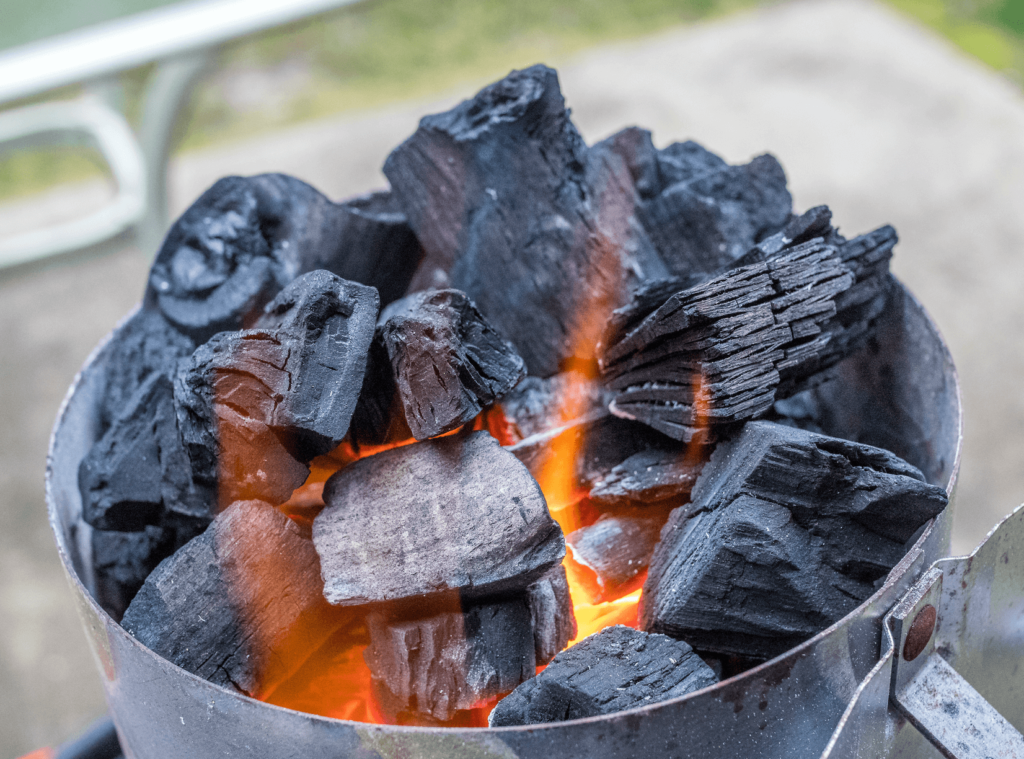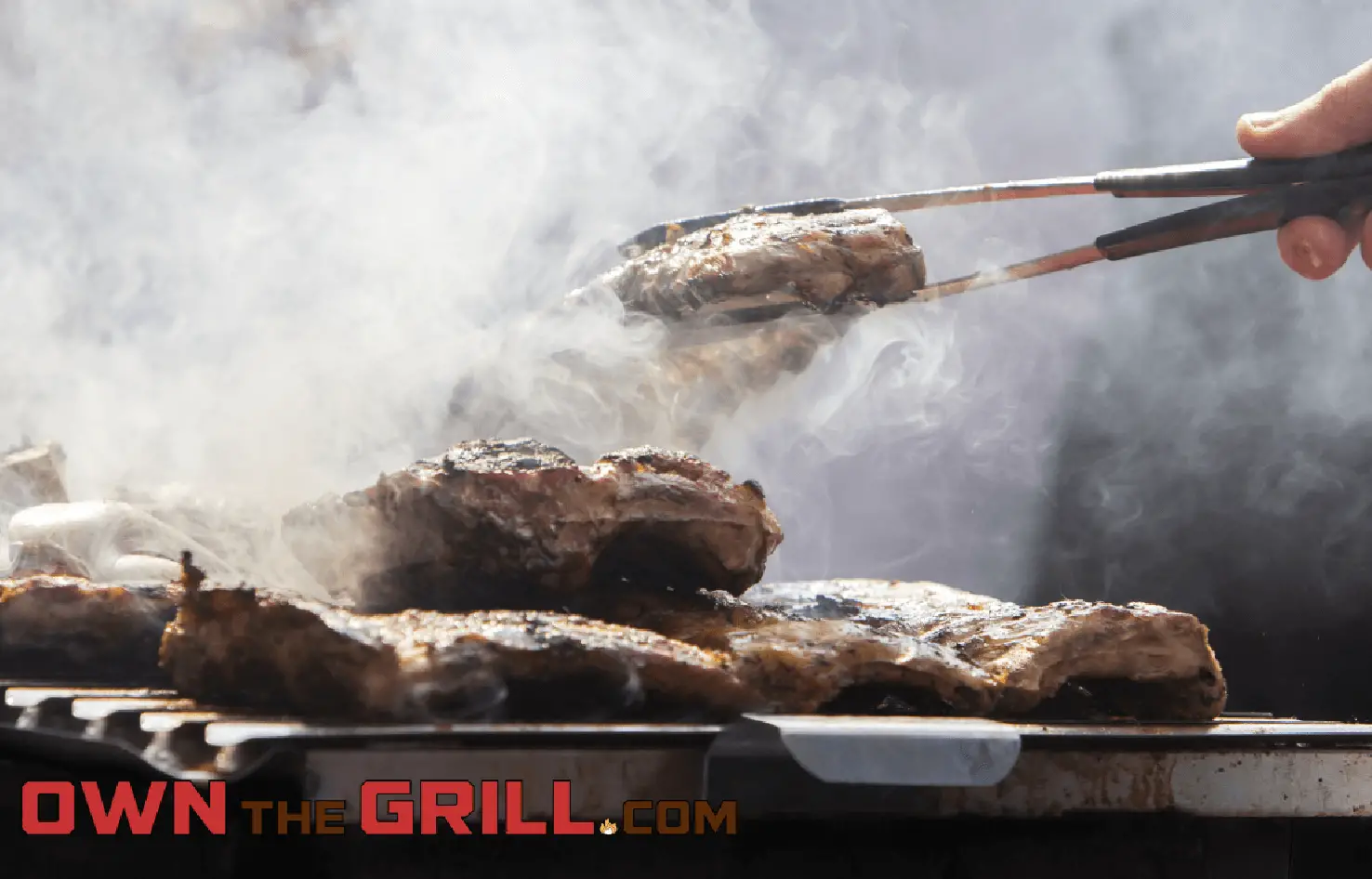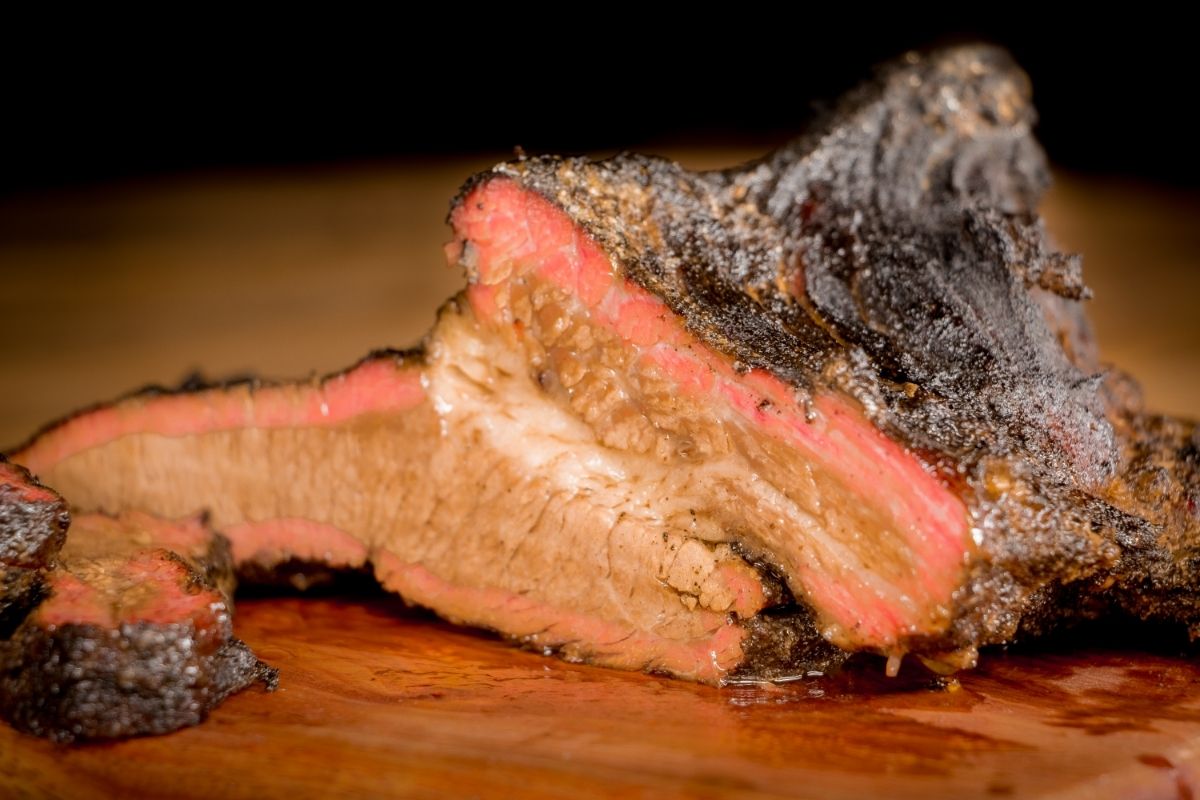When I first got into grilling, I figured charcoal was just…charcoal. I’d stroll down the BBQ aisle at the hardware store, grab a bag—whatever was on sale—and fire up the grill without giving it much thought. I honestly had no clue there were different types of charcoal, let alone that the kind you choose could make a noticeable difference in how your food tastes, how hot your grill gets, and how easy (or frustrating) the cooking process can be. The difference between lump charcoal vs briquettes never even crossed my mind!
As it turns out, charcoal briquettes and lump charcoal are quite different from one another.
It wasn’t until I started diving deeper into the world of outdoor cooking—reading, experimenting, talking to pitmasters—that I discovered the two main contenders in the charcoal game: lump charcoal vs briquettes. They may look similar in the bag, but under the hood, they’re made differently, burn differently, and are better suited for different styles of cooking.
Whether you’re new to grilling or just want to get more intentional about the fuel you’re using, understanding the difference between lump charcoal and briquettes is a great place to start. In this guide, we’re breaking down everything you need to know: how each type is made, how they perform on the grill, the pros and cons of each, and what kind of cooking each one is best suited for. By the end, you’ll be able to confidently choose the right charcoal for your setup—whether you’re searing steaks over high heat, slow-smoking a brisket, or just trying to keep things simple on a weekend cookout.
What Is Lump Charcoal?

Lump charcoal is the purest form of charcoal you can cook with — and it’s the go-to fuel for many professional pitmasters and backyard purists alike. It’s made by burning natural hardwood (like oak, hickory, mesquite, or maple) in a low-oxygen environment until all of the moisture, sap, and volatile compounds are driven off. What you’re left with is essentially carbonized wood — real wood, just transformed into a lightweight, highly combustible form.
This process, called pyrolysis, results in irregularly shaped chunks of charcoal that retain the natural grain and shape of the original wood. Unlike charcoal briquettes, which are manufactured using binders, fillers, and additives to create uniform shapes, lump charcoal contains no chemicals or synthetic ingredients. What you see in the bag is what you get: pure hardwood turned to charcoal, and nothing else.
Because of its all-natural makeup, lump charcoal lights quickly, burns hotter, and responds better to oxygen flow, giving you precise control over your grill’s temperature — especially in ceramic kamado-style cookers like the Big Green Egg. It also produces less ash than briquettes, which means less cleanup and better airflow throughout your cook.
Another big benefit? Flavor. Since lump charcoal is made from real hardwood, it imparts a subtle, smoky essence that enhances whatever you’re grilling — especially when paired with complementary wood chunks or chips. There are no off flavors or chemical smells to worry about, which is one reason lump is often favored for open-flame cooking where purity matters.
That said, lump charcoal isn’t perfect for every situation. Its irregular shape can make it harder to pack consistently, and it tends to burn faster than briquettes, which means you may go through more of it during a long cook. But for high-heat searing, quick grilling, or any situation where flavor and responsiveness matter most, lump charcoal is tough to beat.
In short: Lump charcoal is hardwood in its most primal, fire-ready form — clean-burning, high-performing, and favored by serious grillers who want complete control and exceptional flavor.
- 100% natural - pure, dense South American hardwood blend
- Low ash and superior burn (max temperatures over 1,100ºF
- Waterproof & dustproof packaging with carry handle and zip top closure
How Is Lump Charcoal Made?
Lump charcoal is made by taking hardwood logs and pieces and burning them in an oxygen free environment. The wood is burnt until all impurities are gone and the wood is depleted of any sap, oils, moisture, or other chemicals that might have been inside. All of these substances and impurities are essentially vaporized out of the wood during this burning process.
This process is labor intensive and not the most efficient – which is part of the reason why lump charcoal typically runs more expensive compared to other types of fuel. It takes quite a bit of time to get a solid yield of large, usable pieces.
For reference, only about 15-20% of the hardwood by weight that begins the process makes it out to be lump charcoal that would end up in a bag you’d buy. It more or less takes 125 pounds of hardwood to fill a 20 pound bag of lumpwood.
It’s actually possible for you to see the process first hand by making your own lump charcoal at home!
Benefits and Drawbacks of Lump Charcoal
Now that we’ve gone over what lump charcoal is and how it’s made, let’s take a look at some specific benefits and drawbacks that lump charcoal has to offer.
Lump Charcoal Pros
- Lump charcoal is all natural, and completely void of chemicals, additives, or impurities. This purity translates directly to the quality of your food.
- This type of fuel lights quickly and burns hot. Since it is very reactive to oxygen, you won’t have to spend time messing around with lighting your lump charcoal – it’s a simple and easy process.
- Since it’s so reactive to oxygen, you can easily control your grill or smoker’s temperature with vents and dampers.
- Lump does not produce very much ash, so you can expect minimal hassle and time required to extinguish them after you cook.
- Lots of the wood used is repurposed, which in a small way is a contribution to a healthier planet.
Lump Charcoal Cons
- Lump charcoal is more expensive – even though it burns efficiently, your ongoing costs of fuel will definitely be higher compared to briquettes.
- Your temperature can get out of hand if you aren’t careful. Especially in well insulated cookers, it’s possible to get the heat too high and have trouble getting your smoker back down to the right temperature.
- You have to be careful which manufacturers you buy from – some will sell bags with too many unusable small pieces or dust, which is a frustrating experience to say the least.
What Are Charcoal Briquettes?

Charcoal briquettes are the workhorse of backyard BBQs — a consistent, affordable, and easy-to-use fuel that has powered countless grills across America for decades. Unlike lump charcoal, which is made by carbonizing whole pieces of hardwood, briquettes are a manufactured product. They’re engineered for uniformity, predictability, and long, steady burns — which is exactly why so many casual and even serious grillers rely on them.
So, what exactly are briquettes made of?
At their core, charcoal briquettes are a blend of ground-up charcoal (often made from sawdust or other wood byproducts) mixed with binders like starch to hold the shape, and additives that help with lighting, burning consistency, and ash control. Some brands include natural binders and minimal ingredients, while others add things like limestone (for color and ash) and borax (used during the manufacturing process to release the briquettes from molds).
The result is a dense, pillow-shaped block of compressed charcoal that’s designed to burn longer and more evenly than lump charcoal. Because of their uniform size and shape, briquettes are easy to stack and distribute in your grill, which makes them ideal for low-and-slow cooking where consistency is key — think ribs, brisket, pork shoulder. They produce a steady, controlled heat output and are especially useful when used with a charcoal chimney starter or paired with a smoker setup.
Another major advantage of briquettes is cost and availability. You’ll find them in just about every grocery store, hardware shop, or gas station (even Amazon!) and they’re typically more affordable than lump charcoal by volume. For long cooks, they’re also more fuel-efficient, which means fewer refueling interruptions and better heat management over time.
However, not all briquettes are created equal. Some of the cheaper options can contain more fillers and lighter fluid-style additives, which can lead to unwanted chemical smells and off-flavors — especially if you don’t let them burn down properly before cooking. If you care about clean flavor, look for natural hardwood briquettes with no added chemicals.
To sum it up: Charcoal briquettes are the reliable, slow-burning foundation of many backyard cooks — perfect for long smoking sessions, budget-friendly grilling, and anyone who values steady, predictable heat. They may not have the raw, rustic appeal of lump charcoal, but when it comes to control and consistency, briquettes are a proven performer.
How Are Charcoal Briquettes Made?
Pillow shaped charcoal briquettes are made from sawdust and other wood byproducts. These components are compressed with binders and other additives at extremely high pressure, resulting in the little bricks that show up in your charcoal bag.
Most commonly, the binder of compressed charcoal briquettes is starch. Other additives can include borax, sodium nitrate, and limestone, amongst others.
Benefits and Drawbacks of Charcoal Briquettes
Here are the pros and cons of using charcoal briquettes as a fuel source for your smoker or grill.
Charcoal Briquettes Pros
- Briquettes burn for a long time. You can also easily maintain a steady temperature during longer smoking sessions with briquettes.
- Charcoal briquettes are cheap. On a per pound basis, briquettes are much more affordable than lump.
- Briquettes are better for creating temperature zones. Since the heat output is more steady and predictable, you can easily use briquettes to set up multiple heat zones on your grill.
- You can find briquettes just about anywhere – they are widely available and easy to get ahold of.
Charcoal Briquettes Cons
- Briquettes take a while to light up. And if you don’t invest in a charcoal chimney starter, it can be challenging to light up without using lighter fluid chemicals.
- Charcoal briquettes produce substantially more ash. This contributes to a longer clean up time and too much ash build up just flat out will make your life difficult for certain grill types and smoker types.
- Many types of briquettes have a chemical smell to them. Even if they don’t have a lot of additives in them, the processing required to create briquettes leaves a chemical like smell behind.
- They don’t burn as hot as lump charcoal. Although this can benefit some situations, it can be difficult or take a while to achieve searing temperatures or high heat grilling with briquettes.
Lump Charcoal vs Briquettes – Head to Head
Once you understand how lump charcoal and briquettes differ, the next logical question is: which one should you use? The truth is, there’s no one-size-fits-all answer here. The best charcoal for your grill depends on the type of cooker you’re using and what kind of cooking experience you want. That said, there’s one important exception where the choice is pretty clear-cut.
If you’re cooking on a kamado-style grill — like a Big Green Egg, Kamado Joe, or Primo — lump charcoal is hands-down the better option. These ceramic grills are built with exceptional heat retention in mind, but they don’t leave much room in the firebox for ash collection. Briquettes, which produce significantly more ash than lump, can easily clog your vents and choke out the airflow — which ruins your temperature control and your cook. Lump burns cleaner and hotter, and thanks to the kamado’s efficiency, you won’t chew through your fuel too quickly. Even though lump is usually more expensive, you’ll stretch your bag a lot further in a kamado.
For most other charcoal grills and smokers — like kettle grills, offset smokers, drum smokers, or barrel grills — the choice between lump charcoal and briquettes is more about personal preference. Both fuels can get the job done well, so it really comes down to what you value: speed, control, flavor, cost, or burn time.
Personally, I tend to favor lump charcoal for grilling, especially when I want high heat fast. After a long day, if I’m craving a quick steak or some juicy burgers, I don’t want to stand around waiting for briquettes to come to temperature. Lump lights faster, gets ripping hot, and lets me sear dinner in a flash. It’s my go-to for weekday cooks or any time I want that perfect crust with minimal waiting.
On the flip side, charcoal briquettes shine during low-and-slow smoking sessions. When I’m firing up my smoker for brisket, ribs, or pork shoulder, I’ll often reach for briquettes and pair them with wood chips or chunks to build flavor. Their consistent shape and steady burn make it easy to hold a stable temperature for hours, which is a major win when you’re managing a long cook. That said, if you’re a confident fire builder and know how to manage airflow, lump charcoal can also be a fantastic option for smoking — just expect a bit more babysitting.
One final thing to keep in mind: briquettes tend to produce more visible smoke than lump charcoal. That’s not necessarily a bad thing — it just depends on your flavor preferences. If you love deep, smoky flavors, briquettes can help deliver that punch. But if you’re after a more refined, clean-burning smoke profile, lump charcoal brings that finesse while still giving your food rich, natural wood flavor.
Lump Charcoal vs Briquettes – Final Thoughts
At the end of the day, the lump charcoal vs briquettes debate comes down to what you find important in your food. If you prefer a more “organic”, all natural experience, then lump charcoal is the way to go. Lump charcoal also makes life a little bit easier when you need to get the temperatures high for sear jobs, or if you’re cooking with a kamado grill.
Charcoal briquettes on the other hand are still a perfectly viable source of fuel for your grills and smokers. While they’re subjected to a little bit more processing, they are still 100% food safe and healthy – and are sure to impart classic smokey BBQ flavor onto your food. They’re also a little bit easier to manage for beginners and take a little bit longer to ignite.
Discover more from Own The Grill
Subscribe to get the latest posts sent to your email.






